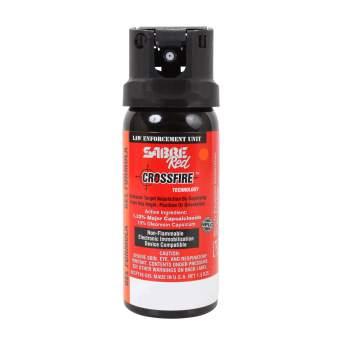Table of Contents
- The Effectiveness of Pepper Spray in Subduing Threats Safely
- Understanding the Tactical Advantages of Pepper Spray for Officers
- Training and Best Practices for Responsible Pepper Spray Use
- Enhancing Law Enforcement Safety with Pepper Spray Protocols
- The Conclusion
The Effectiveness of Pepper Spray in Subduing Threats Safely
Pepper spray has become a crucial tool in law enforcement for its ability to temporarily incapacitate aggressive individuals without causing permanent harm. Its active ingredient, oleoresin capsicum, causes intense irritation to the eyes, respiratory system, and skin, effectively disorienting suspects and reducing their ability to resist arrest. This non-lethal option allows officers to manage volatile situations with a reduced risk of escalating violence, ensuring the safety of both the public and the officers involved.
Several factors contribute to pepper spray’s widespread adoption:
- Rapid Deployment: Easily accessible and quick to use, it allows for immediate response in critical moments.
- Portability: Compact and lightweight, officers can carry it alongside other essential gear.
- Minimal Long-Term Effects: Most individuals recover fully within minutes to hours, with no lasting damage expected when used correctly.
- Versatility: Effective in outdoor and indoor environments, making it suitable for a variety of scenarios, from crowd control to individual encounters.
Understanding the Tactical Advantages of Pepper Spray for Officers
In high-pressure scenarios, officers require tools that offer immediate control while minimizing harm – a need effectively met by pepper spray. This non-lethal option provides tactical advantages by temporarily incapacitating threats, allowing officers to maintain a strategic edge without escalating to deadly force. From a distance, it delivers quick results by disrupting an aggressor’s respiratory system and vision, giving officers valuable seconds to assess and respond appropriately. Its portability and ease of use also enable rapid deployment in fluid situations, making it an essential component in the law enforcement toolkit.
Beyond its immediate impact, pepper spray supports officer safety through several key benefits:
- Cost-effectiveness: It is an affordable alternative compared to more intensive control methods.
- De-escalation potential: Often deters further aggression without physical confrontation.
- Reduced liability: Lowers the likelihood of severe injuries, protecting both officers and civilians.
- Training versatility: Easy to integrate into regular officer preparedness programs.
By harnessing these advantages, pepper spray ensures law enforcement can uphold public safety with confidence and efficiency.
Training and Best Practices for Responsible Pepper Spray Use
Effective use of pepper spray requires comprehensive training that emphasizes both safety and responsibility. Law enforcement officers undergo rigorous instruction covering proper aiming techniques, deployment distances, and situational awareness to minimize unintended harm. Training also focuses on recognizing when pepper spray is appropriate, ensuring it is used as a non-lethal option rather than a default. This education helps officers make split-second decisions that prioritize de-escalation and protect the dignity of all individuals involved.
Best practices extend beyond initial training and include adherence to strict guidelines during real-world use. Agencies often implement protocols that stress:
- Clear communication with team members before and after deployment
- Immediate medical evaluation of persons exposed to pepper spray
- Comprehensive reporting to maintain transparency and accountability
By fostering continual education and strict policy adherence, law enforcement ensures that pepper spray remains an effective tool for maintaining safety with integrity and respect.
Enhancing Law Enforcement Safety with Pepper Spray Protocols
Law enforcement officers face unpredictable and often dangerous situations daily. Implementing well-structured pepper spray protocols significantly enhances their ability to maintain control without resorting to lethal force. These protocols ensure officers deploy pepper spray effectively and safely, minimizing harm while quickly subduing threats. Proper training focuses on targeting vulnerable areas, maintaining safe distances, and understanding environmental conditions like wind direction that could affect spray deployment. Such measures not only protect officers but also uphold the rights and safety of the public.
Beyond tactical application, pepper spray protocols emphasize crucial decontamination and post-exposure procedures. Officers learn to provide immediate assistance to affected individuals and understand when medical evaluation is necessary, fostering transparency and accountability. Key elements include:
- Clear guidelines for pepper spray usage to avoid misuse or excessive force.
- Regular refresher training to maintain proficiency and confidence.
- Documentation and reporting protocols that support legal compliance and internal review.
The Conclusion
In the complex landscape of modern policing, pepper spray remains a vital tool that balances officer safety with the need for non-lethal force. Its effectiveness in quickly subduing threats, ease of use, and relative safety for both law enforcement and suspects make it an indispensable asset. While no tool is without limitations, pepper spray’s role in de-escalation and protection underscores why it continues to be a trusted resource in law enforcement agencies worldwide. As policing evolves, ongoing training and responsible deployment will ensure pepper spray remains a key component in fostering safer communities for all.Check Our Other Blogs
- StunGun – Your Trusted Source for Stun Guns, Laws, and Self-Defense Tips
- PepperSprayLaws – Your Trusted Resource for Pepper Spray Information
- StunGunLaws – Your Trusted Guide to Stun Gun Legality and Safety




